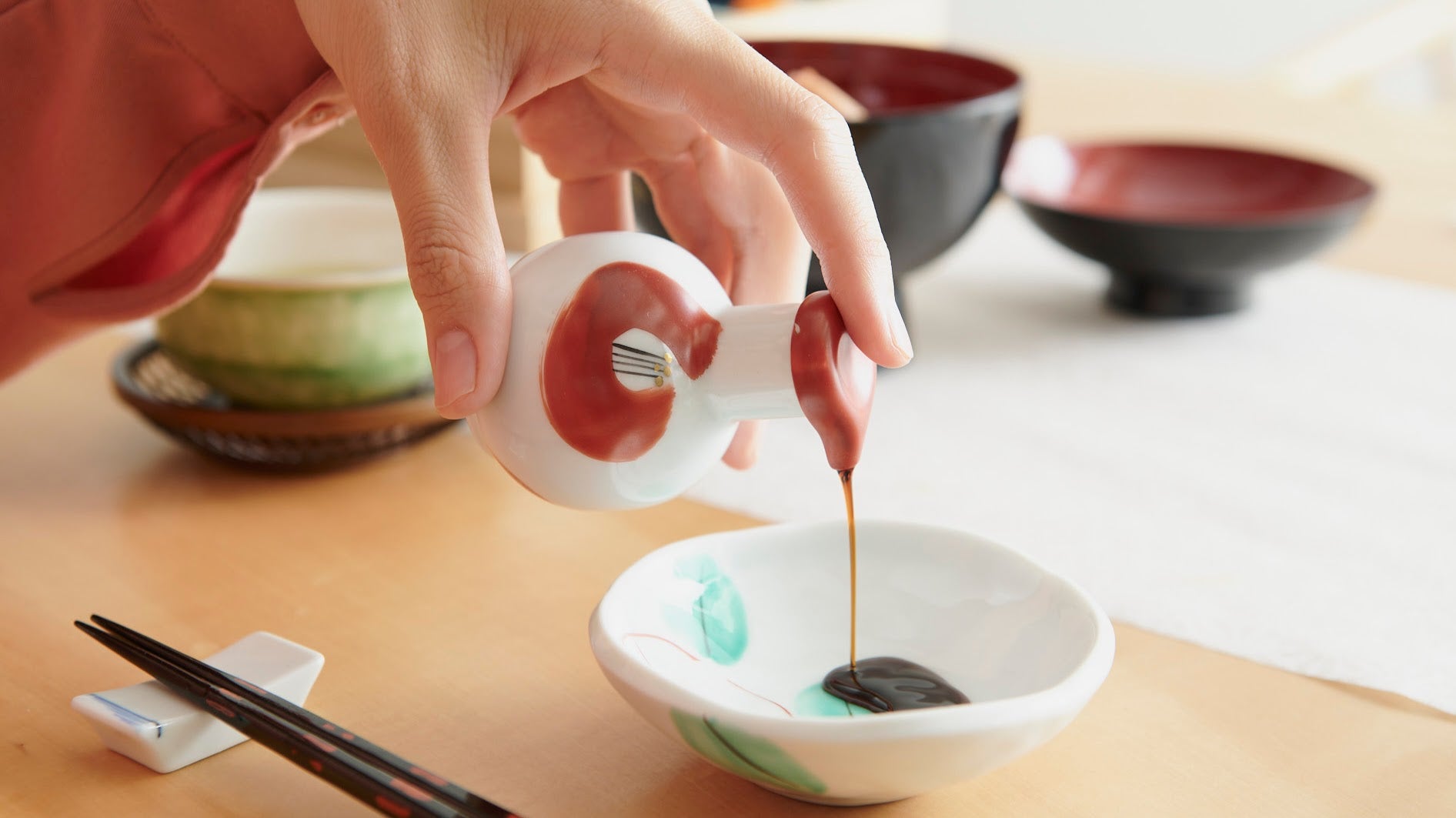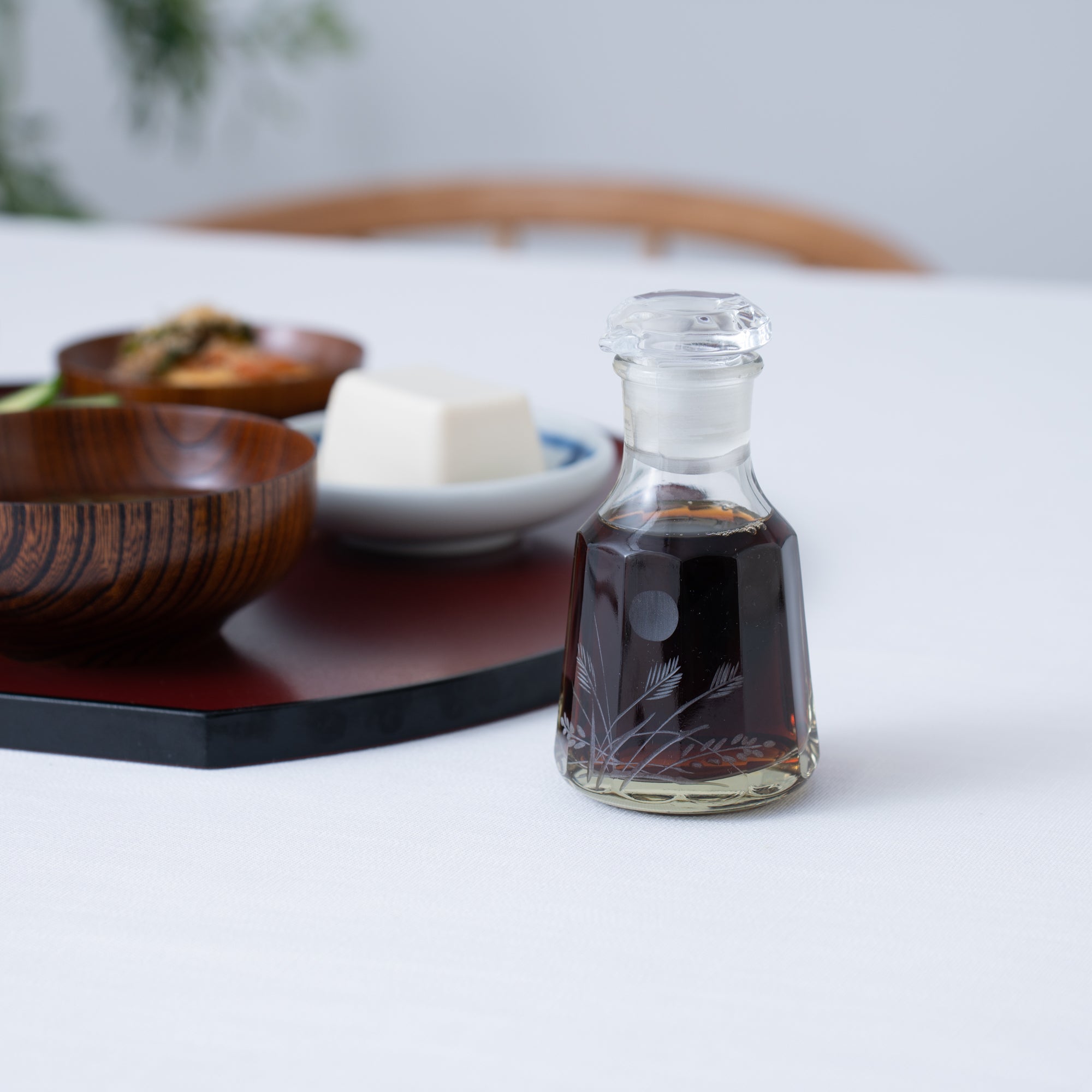
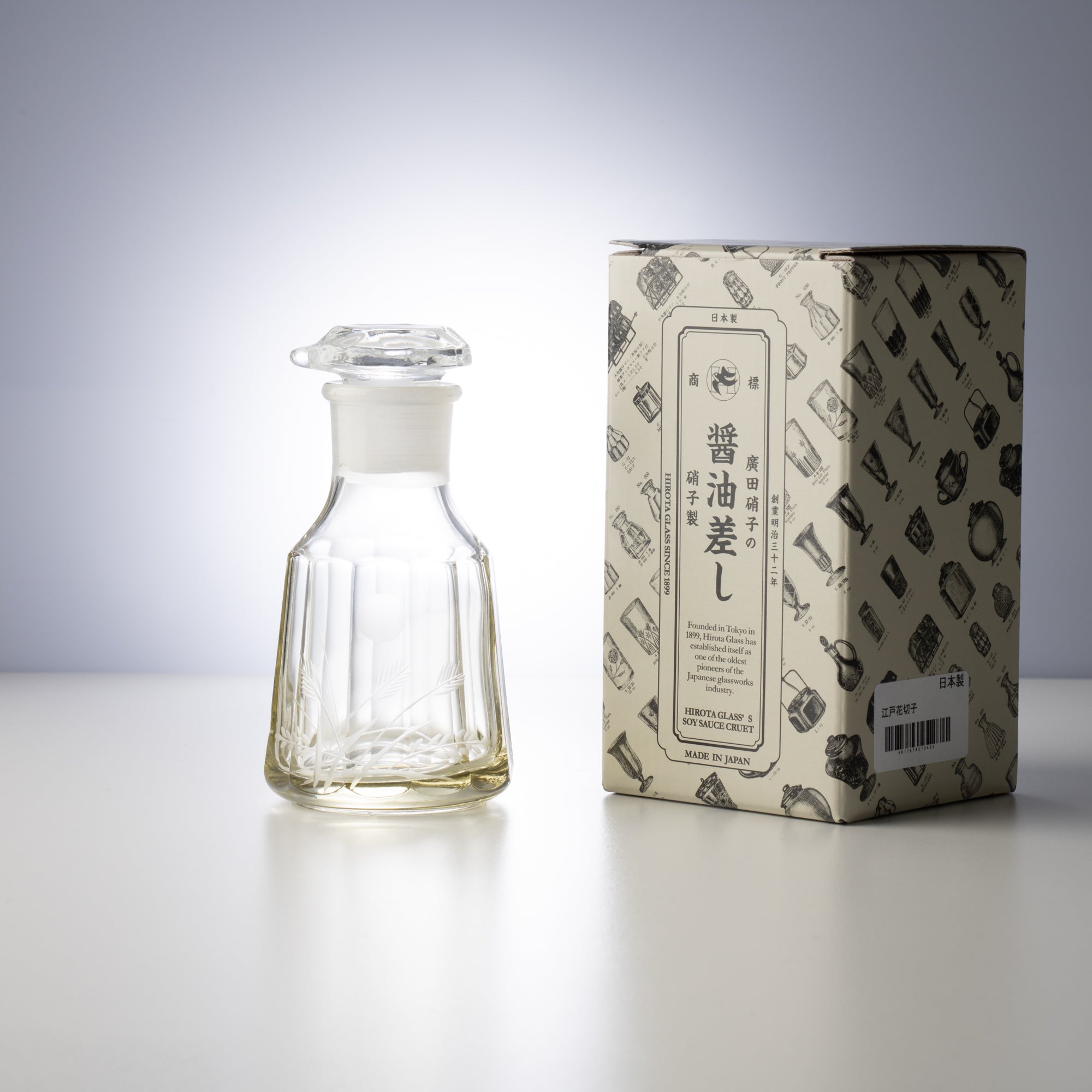

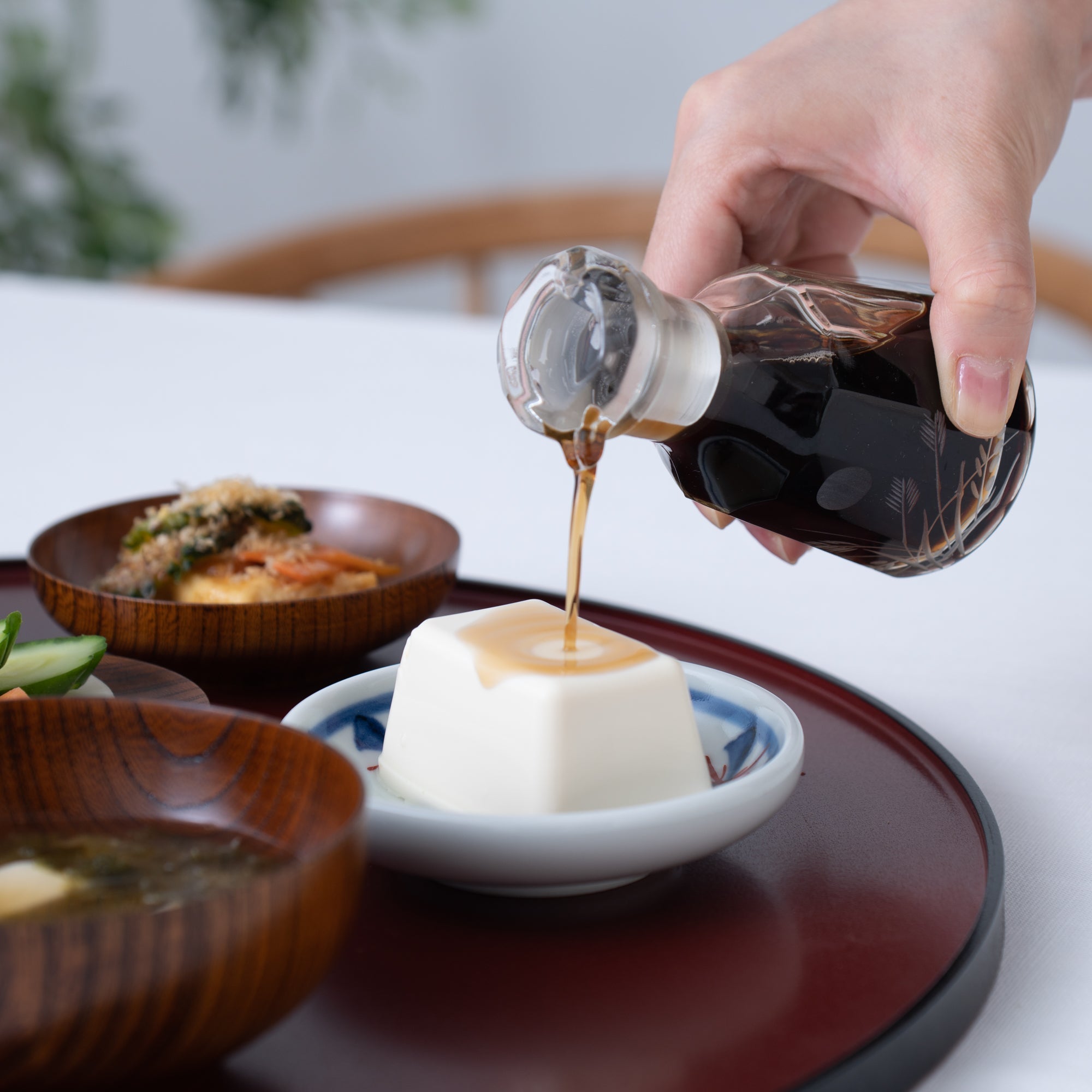
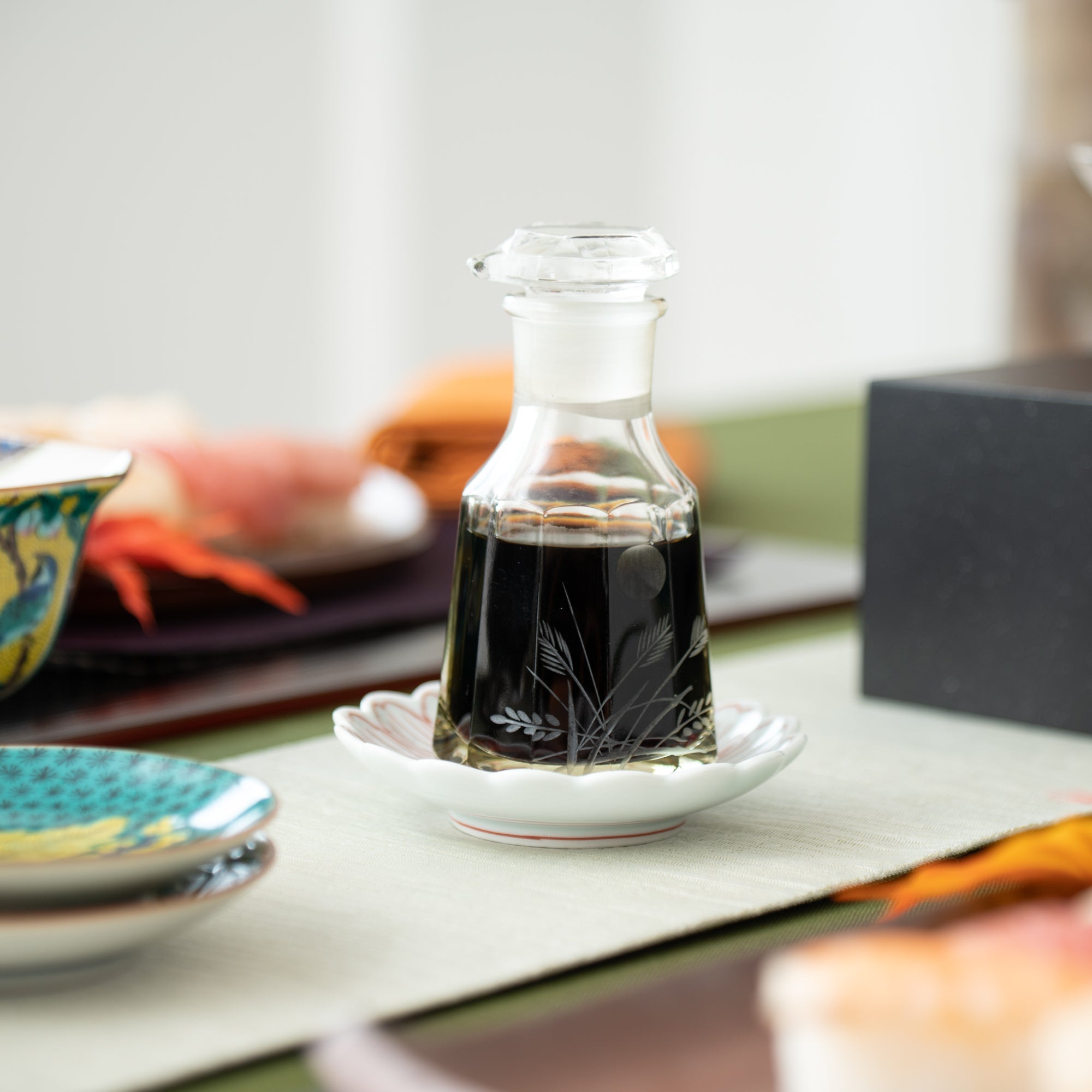
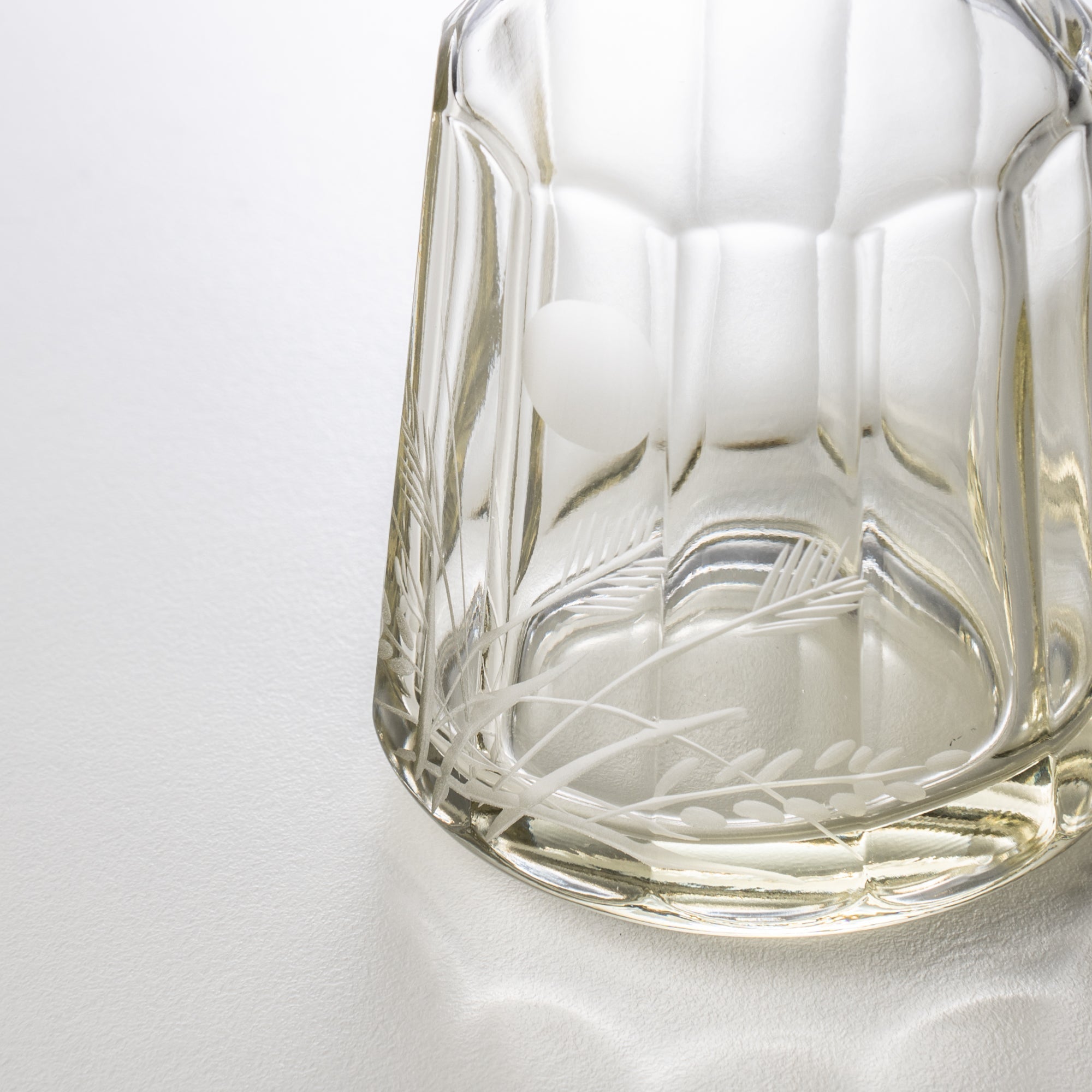
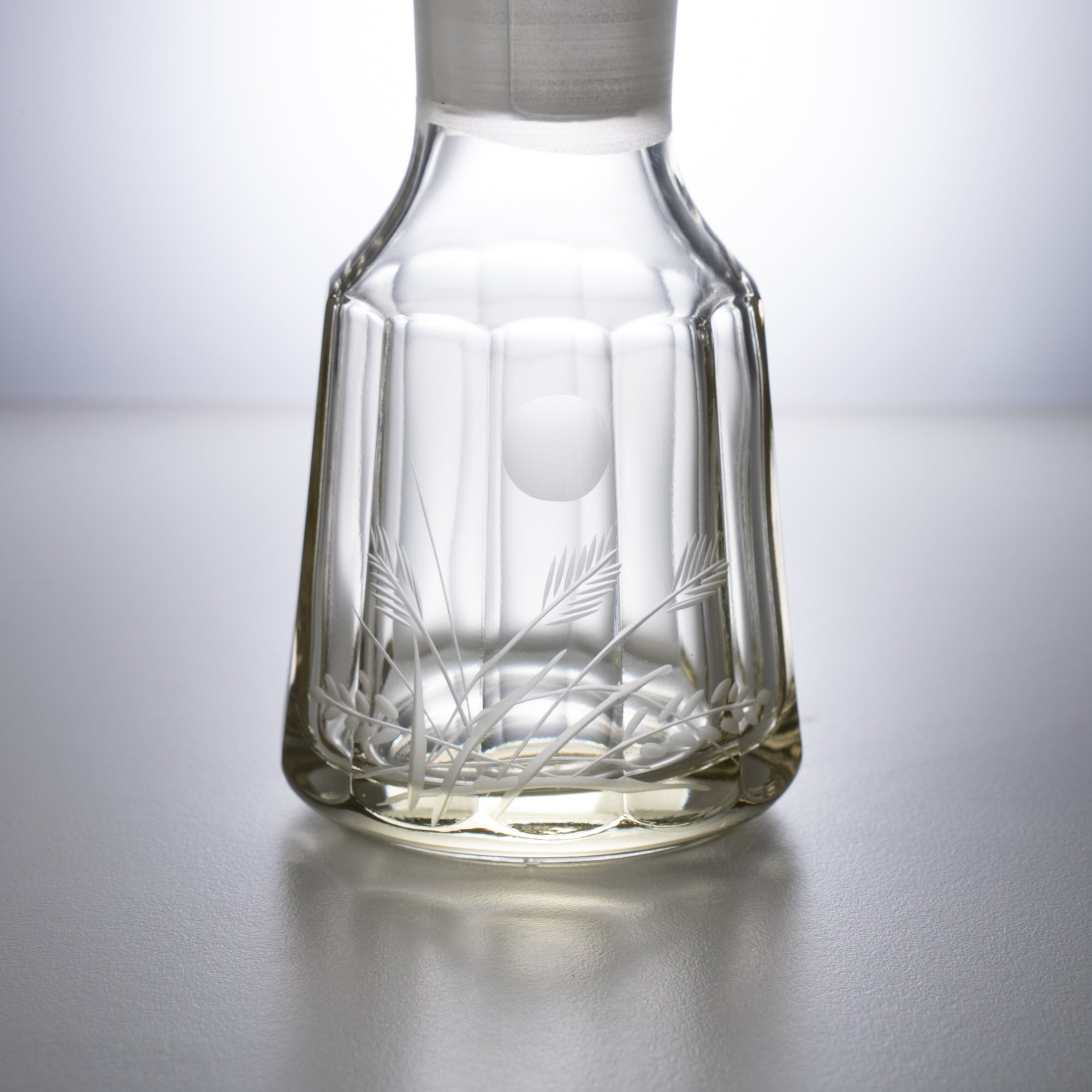
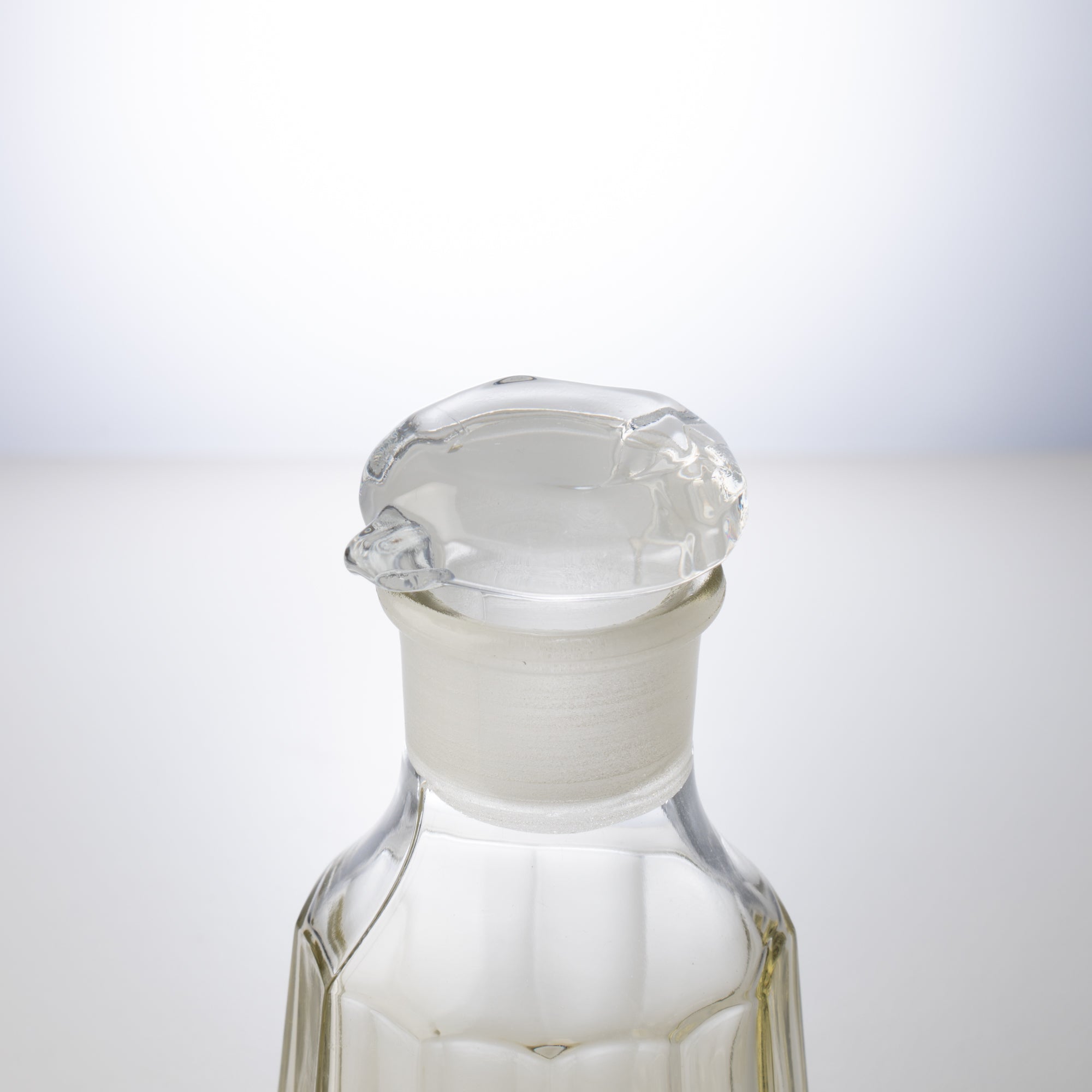
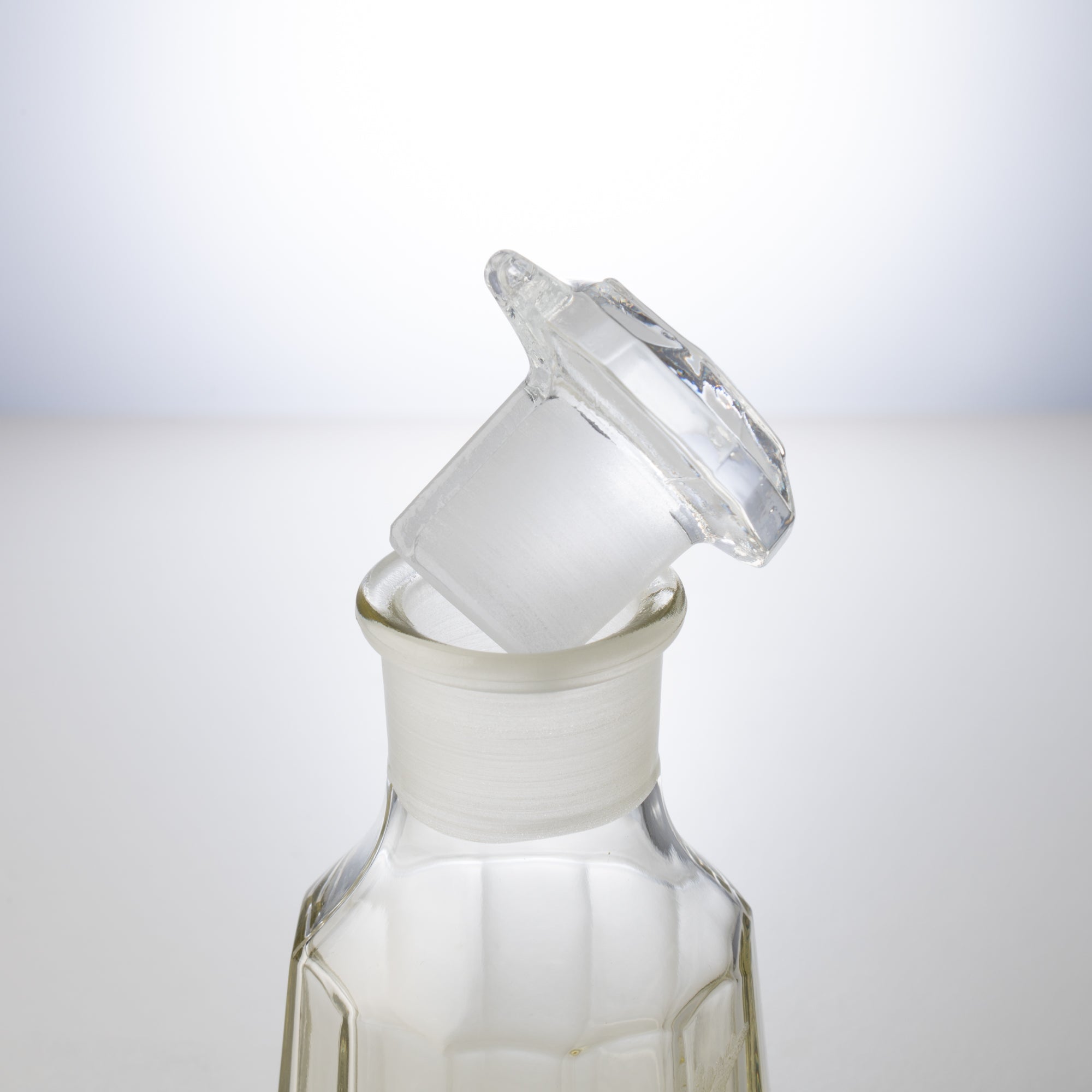
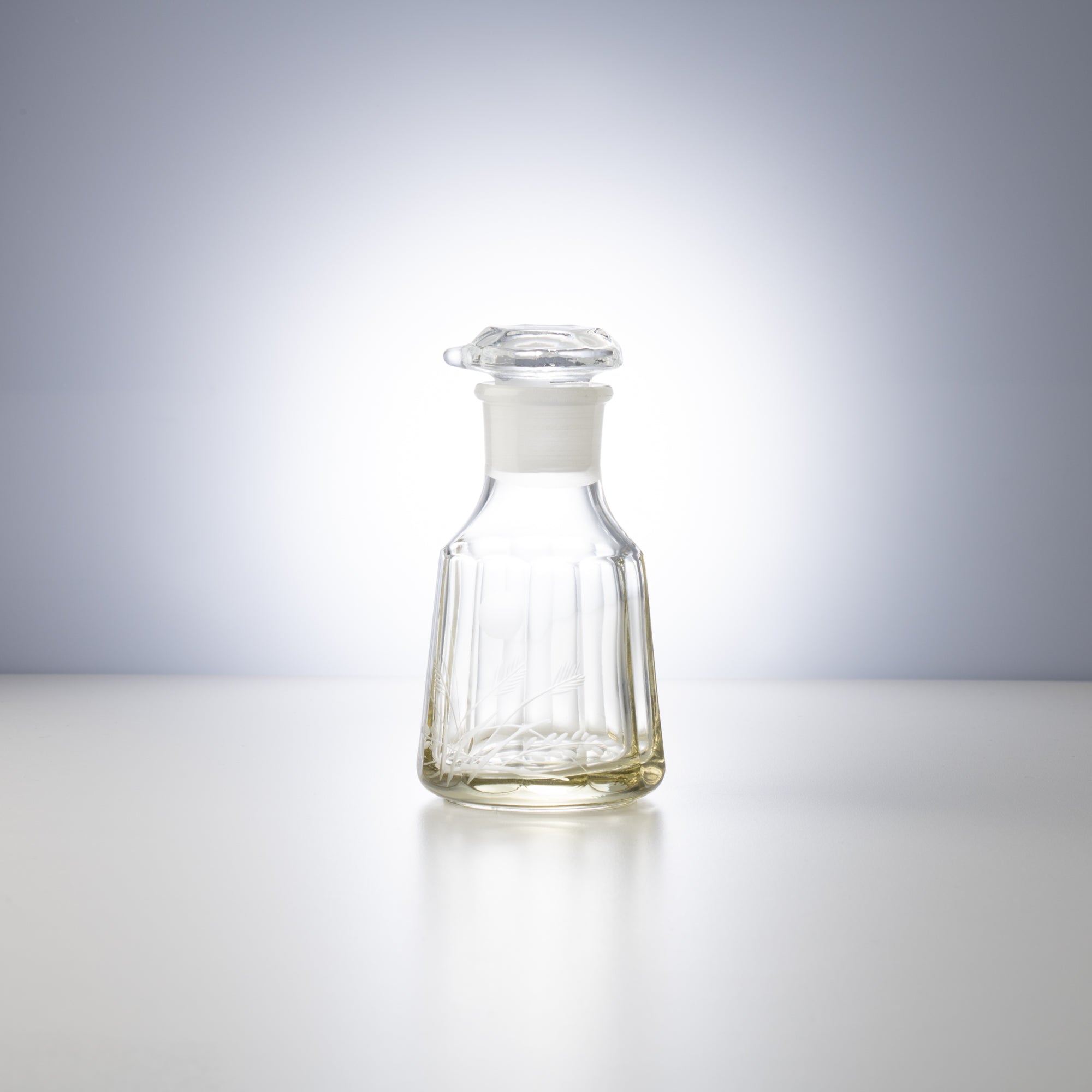
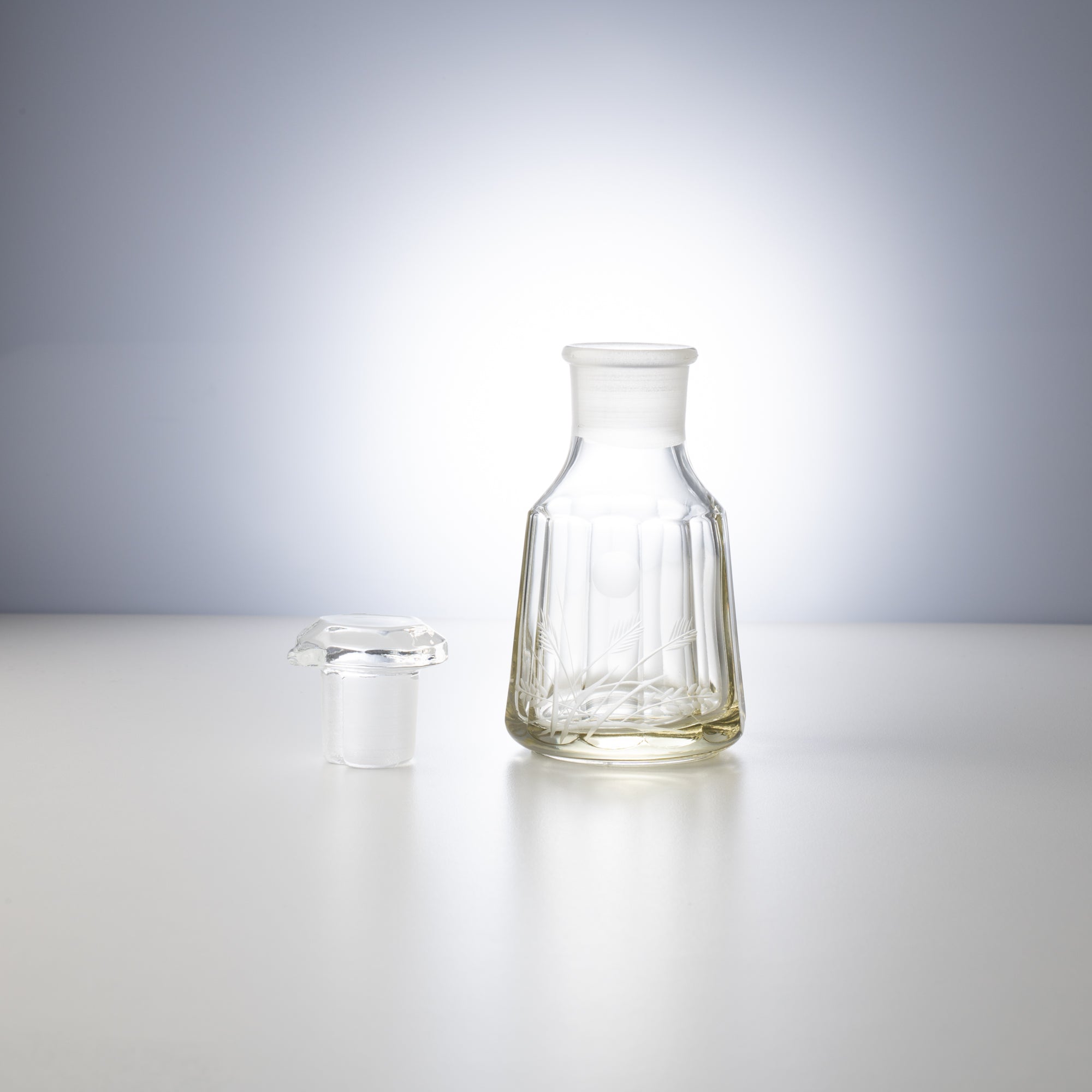
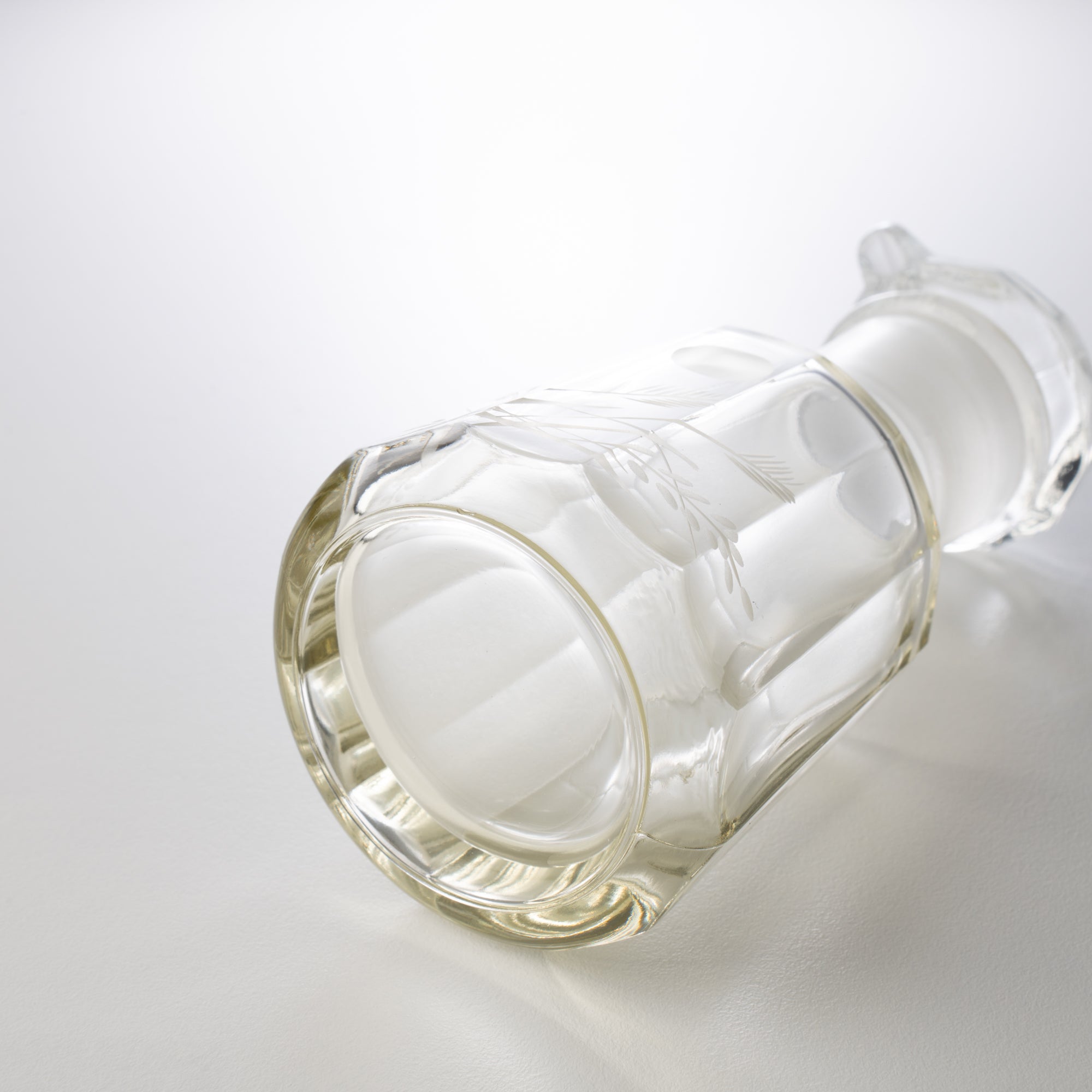
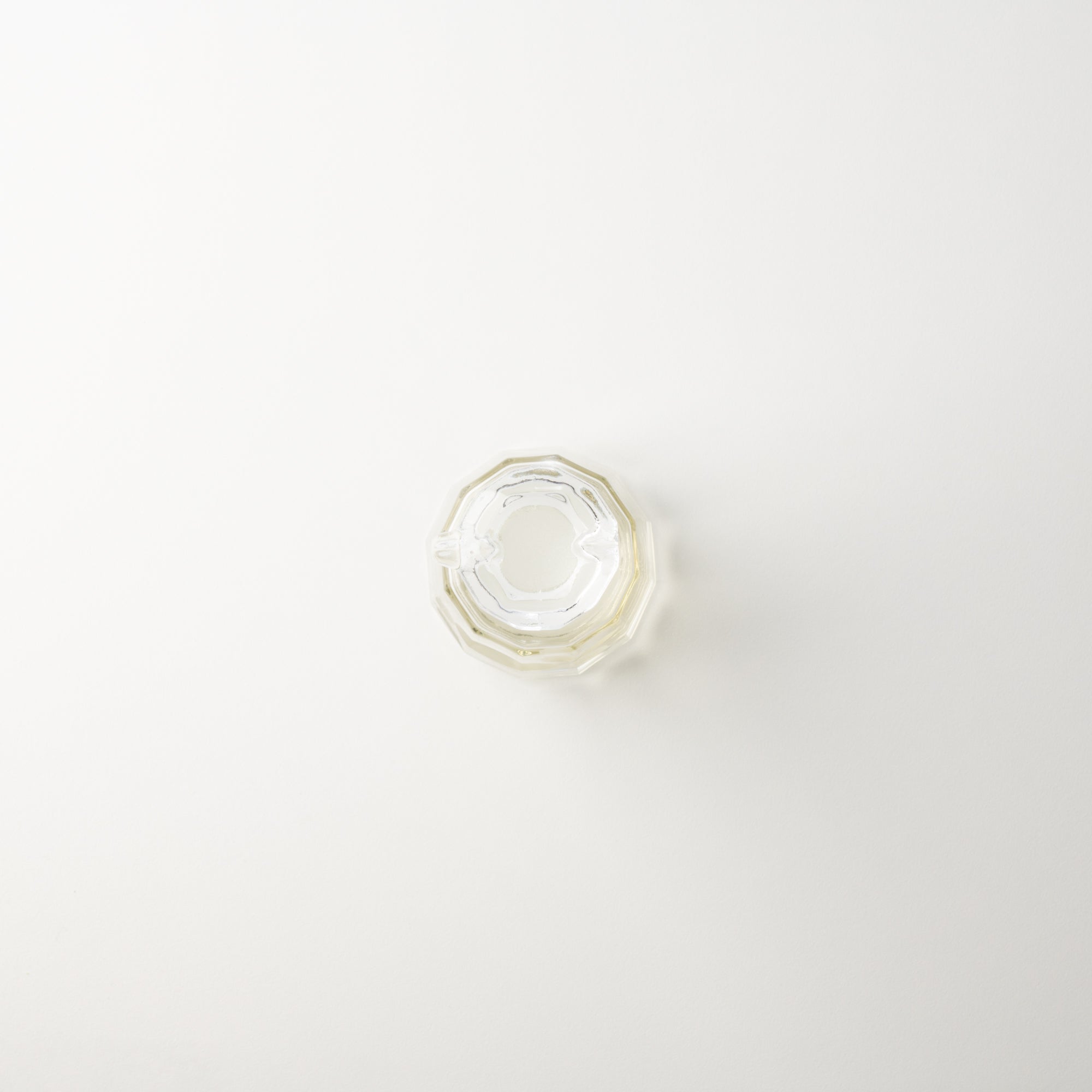
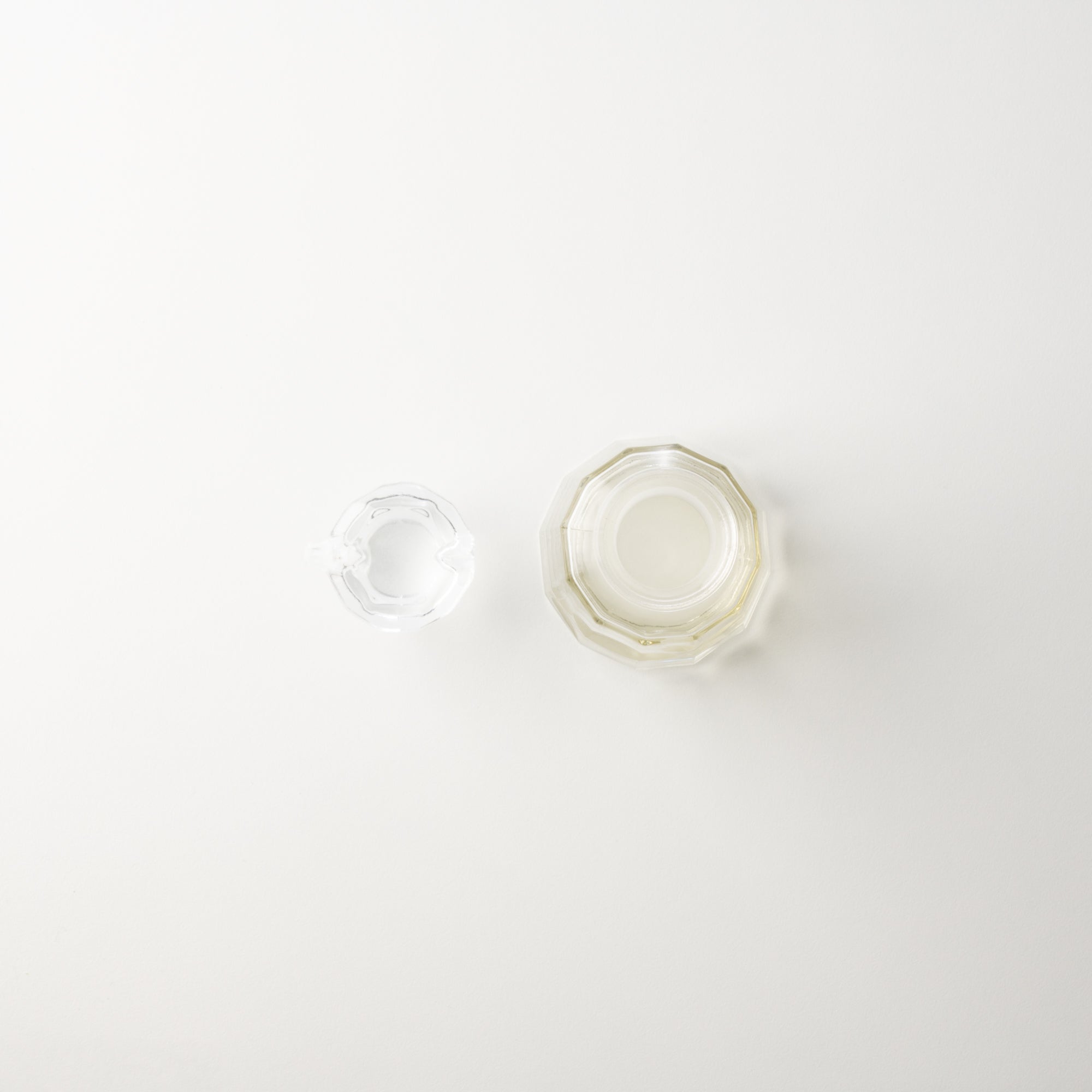
Herbstliches Pampasgras Edo Kiriko Sojasaucenspender aus geschliffenem Glas
Estimated Shipping Widget will be displayed here!
Japanisches Pampasgras ist eine der sieben Herbstblumen. Es dient als Dekoration für das „Otsukimi“, auch bekannt als „Jugoya“, wenn die Menschen am 15. August des Mondkalenders den wunderschönen Vollmond genießen.
Auch heute noch wird sie oft in Blumenläden verkauft und im Herbst in den Geschäften ausgestellt. Sie ist eine Pflanze, die seit der Antike bis heute in der japanischen Kultur verwurzelt ist.
Jedes Stück wird von einem Handwerker von Hand geschnitten. Dieser Sojasaucenspender auf dem Tisch beruhigt Sie sanft mit den wunderschönen vier Jahreszeiten Japans.
Eine antike Farbe mit einem leichten Gelbstich und das zart facettierte Kiriko-Design ergeben eine wunderschöne Blume, wenn die Sojasauce hineingegossen wird.
Hirota Glass war das erste Unternehmen, das die Sojasaucenspender aus Glas mit der gefrostet Glasverbindungen, die heute zum Standard gehören. Die Sojasaucenspender von Hirota Glass sind nicht nur schön, sondern auch einfach zu bedienen und gelten als langlebig, da sie weder auslaufen noch tropfen.
Dieses Stück ist ein perfektes Geschenk oder für den Heimgebrauch.
Hirota Glass ist einer der ältesten Glashersteller in Tokio und wurde 1899 gegründet. Basierend auf den Designdaten, die dem Unternehmen seit seiner Gründung überliefert wurden, produziert Hirota Glass weiterhin eine Reihe von Produkten, die mit der zeitgenössischen Inneneinrichtung harmonieren und gleichzeitig die traditionellen Techniken der japanischen Glasbläserei und Edo Kiriko bewahren.
EINZELHEITEN
| Quantity | 1 |
| Size | D 6 cm (2.4 in) × H 11.3 cm (4.4 in) |
| Capacity | 100 ml (3.4 oz) |
| Material | Glass |
| Package Type | Paper box |
| Microwave | No |
| Dishwasher | No |
Hersteller / Marke
Hirota Glass wurde 1899 während Japans transformativer Meiji-Ära (1868–1912 n. Chr.) gegründet und gilt als einer der ältesten Glashersteller Tokios. Mit über einem Jahrhundert Erfahrung bewahrt das Unternehmen die filigranen Techniken des Edo-Glases und des Edo-Kiriko und interpretiert gleichzeitig klassische Stile neu. Von sanften Rundungen der Taisho-Ära (1912–1926 n. Chr.) bis hin zu modernen Neuinterpretationen verkörpert jedes Stück die Hingabe an Schönheit, Funktionalität und traditionellen japanischen Charme.
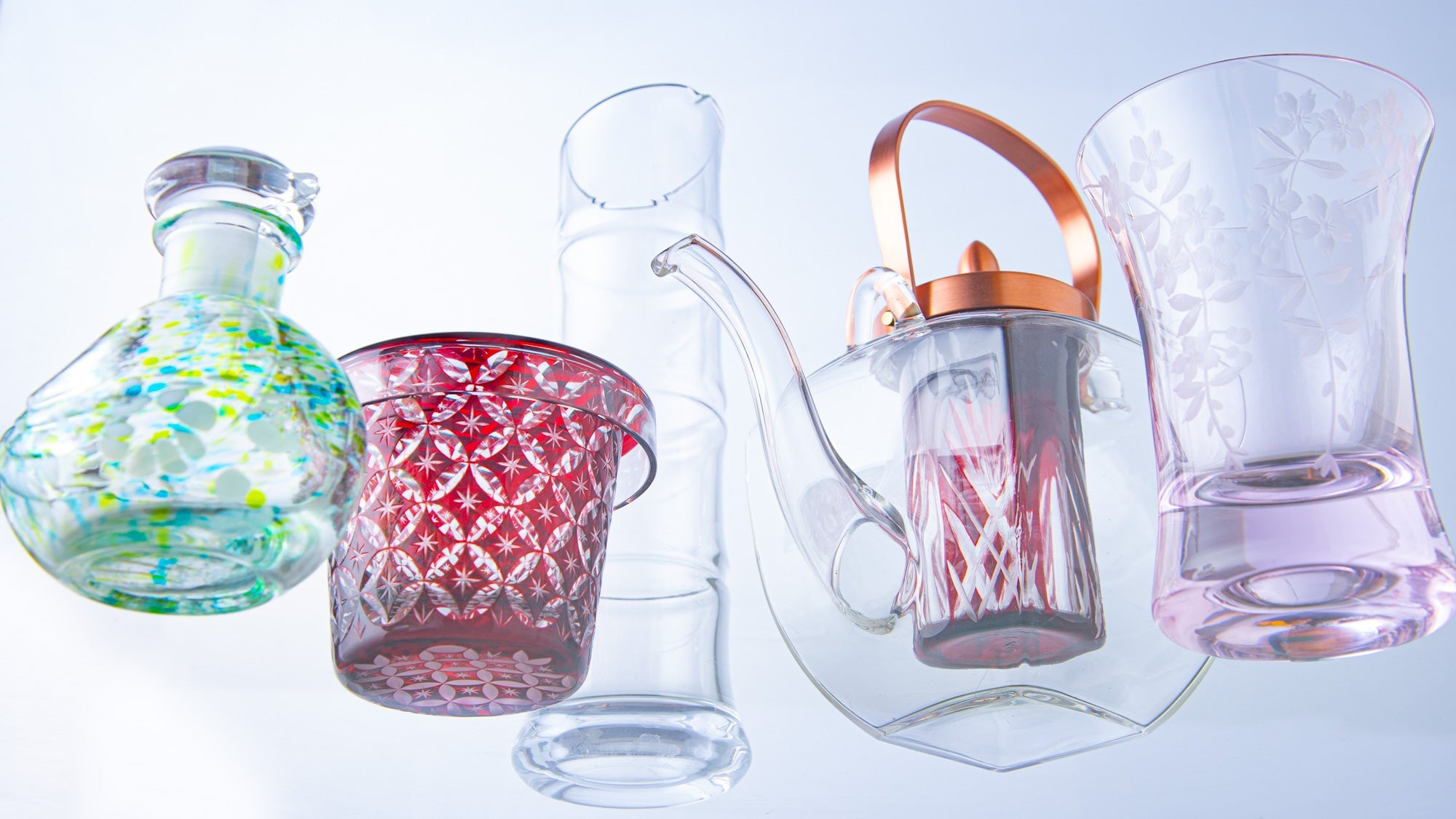
Kunsthandwerk
Tokio, die Hauptstadt Japans, ist auch ein Zentrum des Kunsthandwerks. Zu den vielen Traditionen zählen Edo-Glas und Edo Kiriko – Glaswaren, die in Edo, dem früheren Namen des Zentrums von Tokio, seit rund 200 Jahren weitergegeben werden.
Ihre leuchtenden Oberflächen spiegeln die jahrhundertealte Handwerkskunst wider, die im ehemaligen Edo-Gebiet entstand und im modernen Tokio noch immer floriert.
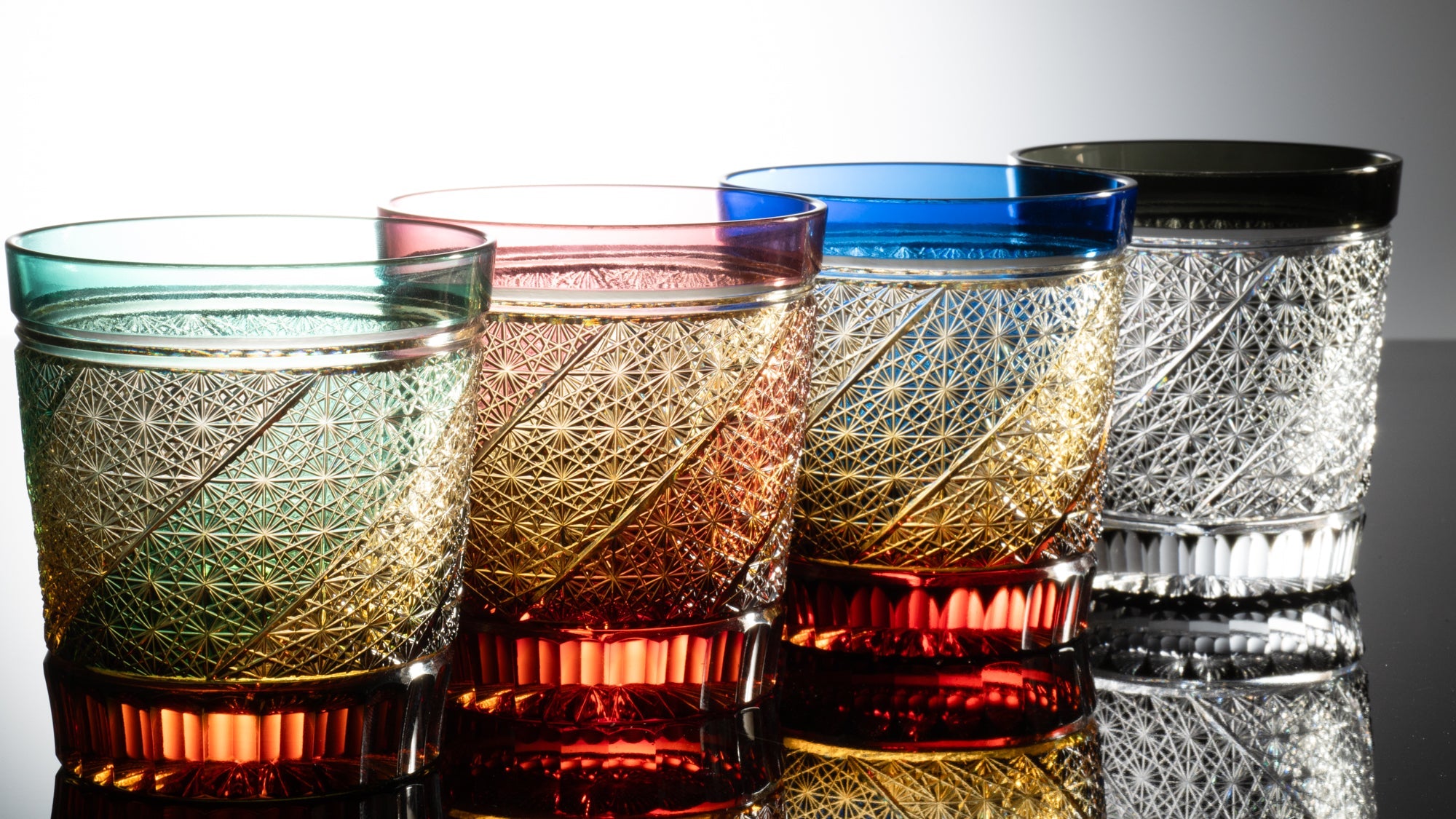
Optionen auswählen
Estimated Shipping Widget will be displayed here!
Sojasaucenspender
Sojasauce ist ein wesentlicher Bestandteil der japanischen Küche. Warum also nicht dieses Gewürz elegant auf Ihrem Esstisch präsentieren, indem Sie eine der folgenden Optionen wählen? Musubi KilnSojasaucenspender von ? Egal, ob Sie Porzellan oder Glas bevorzugen, Sie finden Designs, die Funktionalität und Schönheit perfekt vereinen.
